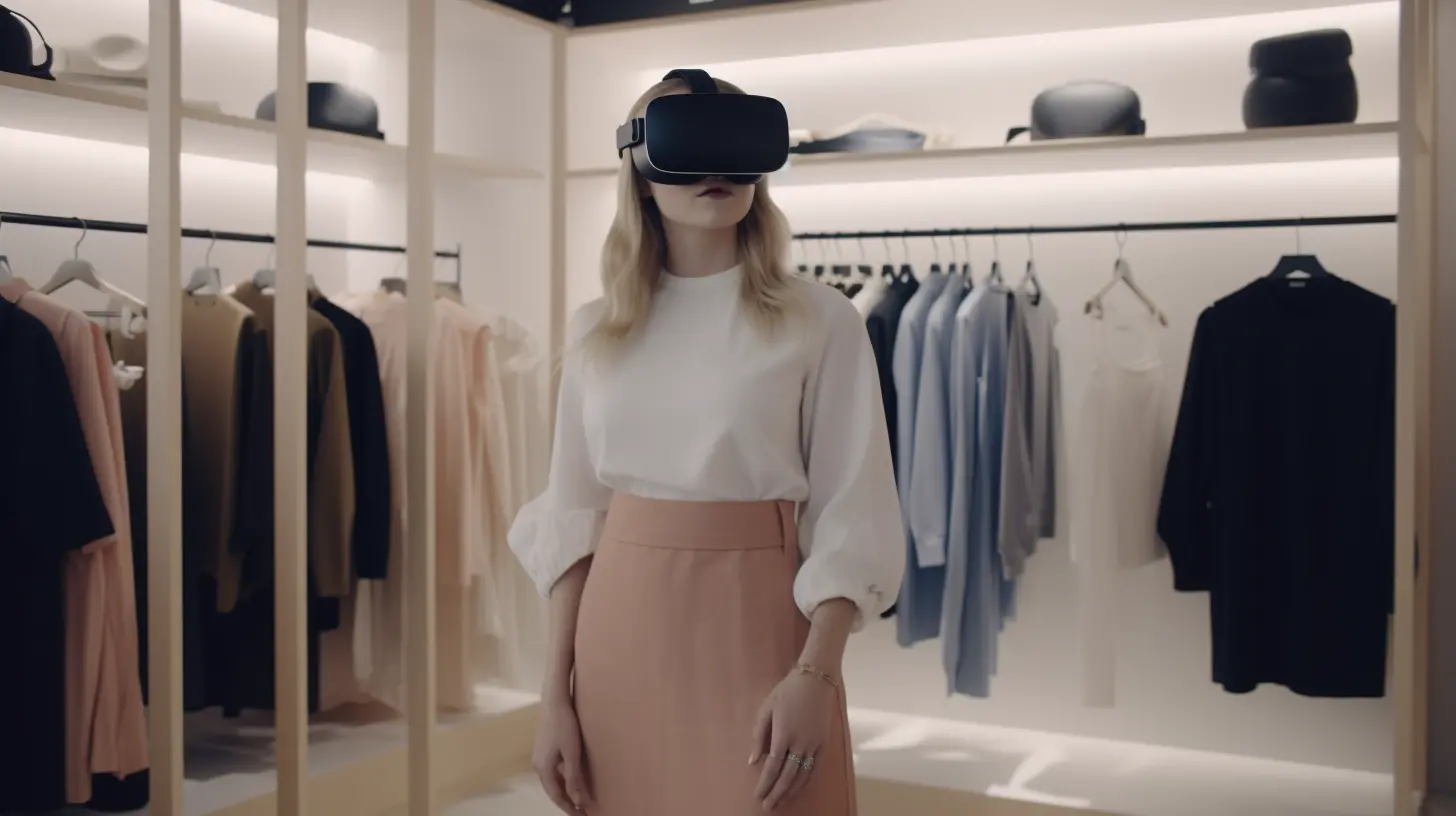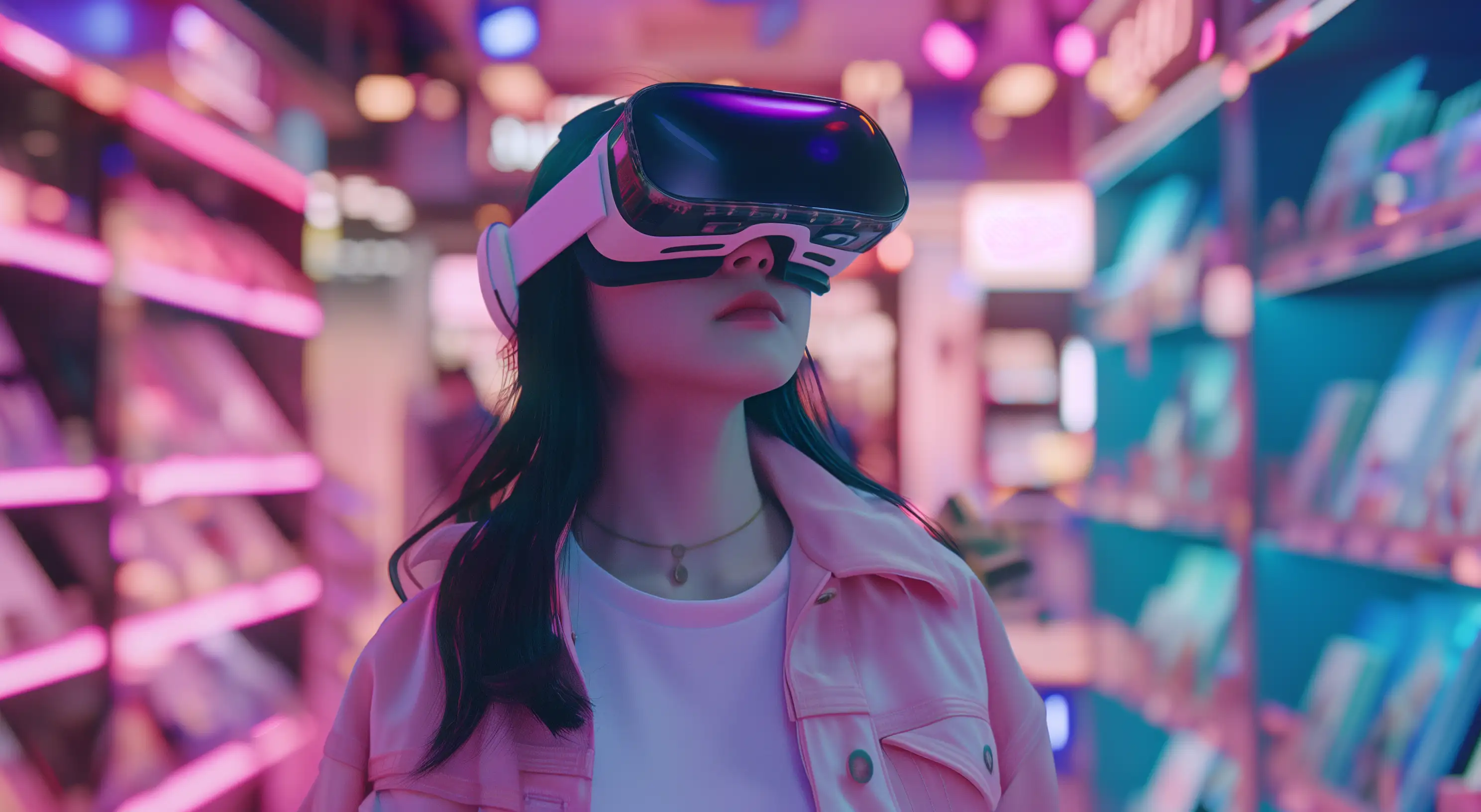VR/AR in shopping and <br/> E-commerce

Virtual Reality (VR) and Augmented Reality (AR) are reshaping the landscape of shopping and e-commerce, offering innovative ways for customers to engage with products and make informed purchasing decisions. Here's how VR and AR are transforming the shopping experience:
- Virtual Reality Shopping: VR allows customers to virtually enter a store and explore its offerings as if they were physically present. Customers can navigate through different sections, view products in detail, and even interact with them using hand gestures or controllers.
- Augmented Reality Product Visualization: AR enables customers to visualize products in their real-world environment through their smartphones or AR glasses. For example, customers can use AR to see how furniture would look in their living room or how a new pair of shoes would fit.
- Try Before You Buy: AR technology lets customers virtually try on clothing, accessories, makeup, and even furniture. This "try before you buy" experience enhances confidence in purchasing decisions, reduces returns, and improves customer satisfaction.
- Virtual Fitting Rooms: Virtual fitting rooms in VR allow customers to try on clothes in a virtual environment, avoiding the hassle of changing physical clothes. They can experiment with different styles, colors, and sizes seamlessly.
- Interactive Shopping Experiences: VR and AR create interactive and immersive experiences that engage customers and keep them entertained while shopping. This leads to increased customer engagement and longer browsing times.
- Personalized Shopping: AR and VR can provide personalized recommendations based on customers' preferences and purchase history, enhancing the overall shopping experience.
- Reduced Buyer's Remorse: AR and VR technologies help customers make more informed decisions by visualizing products in real-world contexts, reducing the likelihood of buyer's remorse.
- Virtual Showrooms: Brands can create virtual showrooms to showcase their products in a dynamic and captivating manner, transcending the limitations of physical space.
- Enhanced Product Information: AR overlays can provide customers with additional product information, specifications, pricing, and reviews, enhancing the shopping experience and reducing the need for staff assistance.
- Increased Online Engagement: Incorporating AR and VR elements into e-commerce platforms increases user engagement, encourages longer visits, and boosts online sales.
Development Process: The development process for VR and AR apps involves careful planning, designing, coding, testing, and delivering the final product to the client. Here's an overview of the process:
- Model and Structure: The development process begins with creating a model and structure of the app, keeping in mind the client's brand features and requirements. This includes deciding on the layout, user interface, and overall functionality.
- Prototype Approval: Once the prototype is created, it goes through approval from the client. This step ensures that the initial design aligns with the client's vision and needs.
- Coding and Development: After the prototype is approved, the development team starts coding the app. This involves translating the design into actual code and building the specialized retail app.
- Testing: The developed app undergoes rigorous testing to ensure its availability, usability, and functionality in various situations. Testing helps identify and fix any bugs or issues before the final release.
- Final Product: Once the app passes testing and meets the desired quality standards, the final product is ready. It is then delivered to the client for their use and implementation.
ServReality specializes in creating tailor-made VR and AR experiences for shopping and e-commerce companies, allowing businesses to offer their customers unique and immersive interactions with their products. With VR and AR, businesses can differentiate themselves in a competitive market, provide innovative shopping solutions, and create a more engaging and satisfying shopping journey for their customers.
Advantages of VR and AR: Choosing VR and AR technologies offers a range of benefits that can enhance various aspects of business operations:
- Quick and Engaging: VR and AR experiences are quick and engaging, helping users understand and retain information faster.
- Risk-Free Training: Employees can undergo training without fear of making mistakes or incurring risks. This leads to better-prepared workers and cost savings.
- Skill Enhancement: Complex tasks can be practiced repeatedly in a virtual environment, allowing workers to improve their skills without real-world consequences.
- Scenario Analysis: VR enables clients to analyze different scenarios before implementing real-world solutions, leading to better decision-making.
- Real and Immediate Feedback: VR and AR experiences deliver real and immediate feedback to users, making the learning process more effective and engaging.
ServReality's Expertise: ServReality specializes in creating interactive VR and AR experiences for various industries, including gaming and business. Our goal is to leverage these innovative technologies to enhance user engagement and provide valuable solutions.
Whether it's creating virtual tours, interior customization tools, or augmented catalogs, ServReality helps businesses deliver compelling experiences that bring them closer to their audience.
If you're looking to implement VR/AR experiences for your business or advance your shop with innovative technologies, don't hesitate to contact our team at ServReality. We're here to guide you through the digital revolution of VR and AR and help you achieve your goals.


